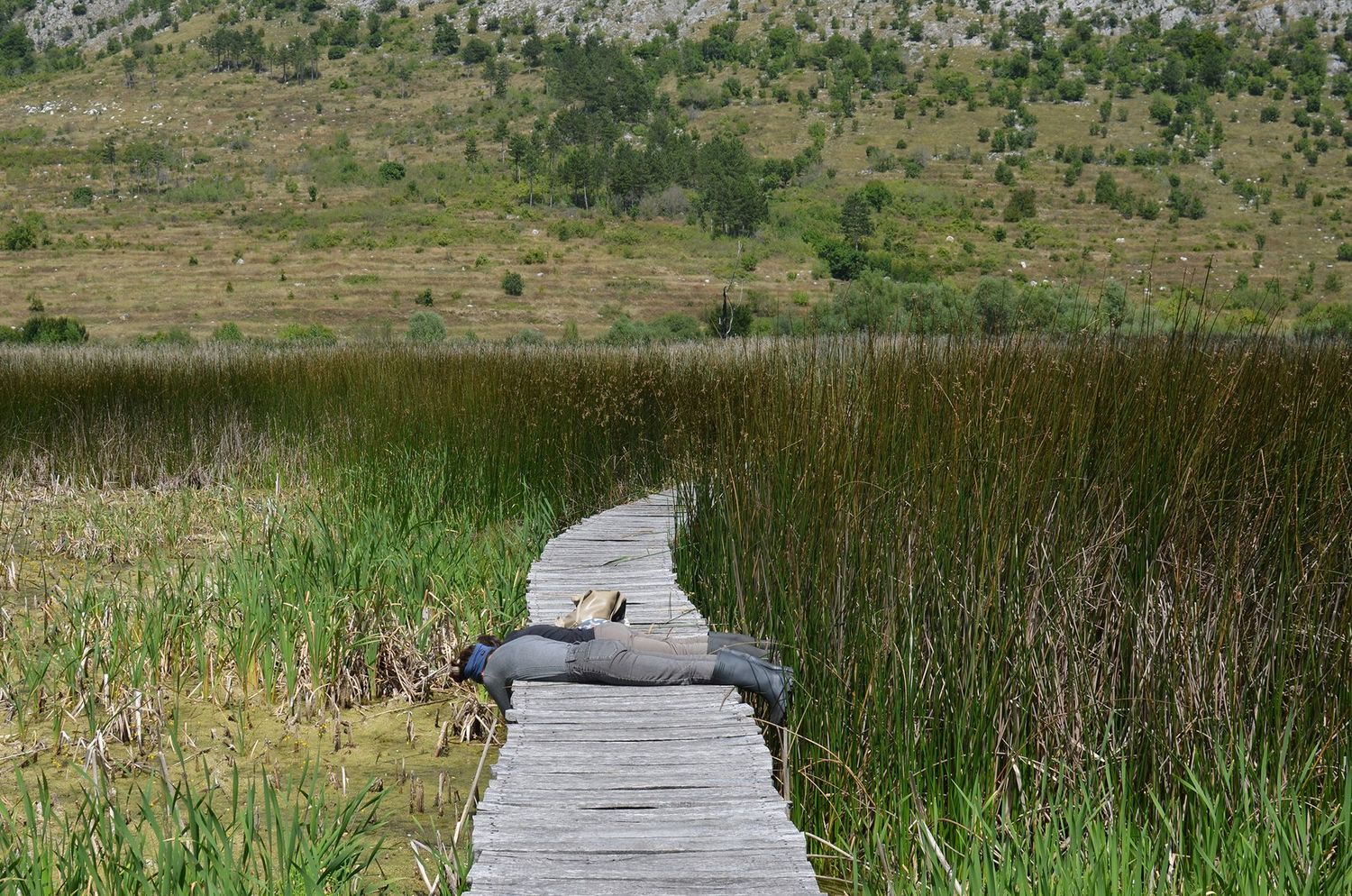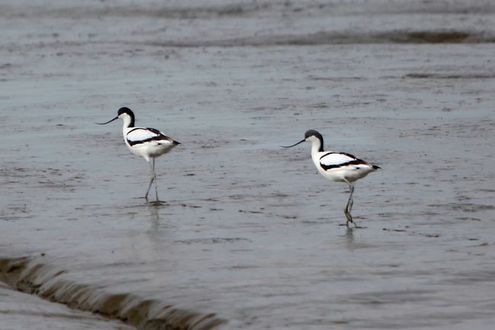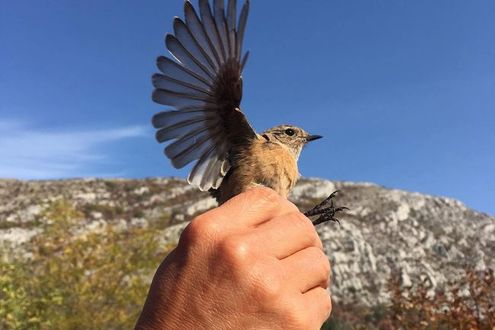By Miroslava Popova (BALKANI WS) & Vladimir Ivanov (WWF). Photo by Antoni Rayzhekov.
In 2023, a team from the BALKANI Wildlife Society and WWF discovered that the eurasian crane has returned to nest in the Dragoman Marsh, after a 66-year absence from Bulgaria. However, the marsh is still not designated as a water body, causing issues for its preservation.
The return of the cranes to Bulgaria is thanks to a long-term effort to restore the Dragoman Marsh after it was drained in the early 1900s. The cranes' return proves that although it takes time and resources, wetlands degraded by human activity can be successfully restored.
The BALKANI WS team, under the leadership of Associate Professor Dr. Petar Shurulinkov, has been tracking the crane's return since 2010. The presence of adult birds during the nesting period in the Dragoman Marsh has been established several times over the last five years, which allowed the team to assume the nesting of the species. In the summer of 2022, a family group of two adults and two young birds was registered, which are returning this spring.
In May, the young birds disappear and the adults are increasingly difficult to spot, which is normal when the pair is guarding the nest, eggs and young. On June 11, experts documented the first newly hatched eurasian crane chick in Bulgaria since 1957.
"The preservation of the species is an extremely big challenge, as the birds are very sensitive to human presence and activities. The nest is built on the ground of grass, among massifs of reeds and, less often, poplar, and the young are nidifugous - they leave the nest immediately after hatching. This makes the eggs and young vulnerable to terrestrial predators and fires," explains Dr. Girgina Daskalova, a member of the research team. "We are appealing to the general public for their understanding and support to preserve the Dragoman Marsh, its biodiversity and an iconic bird like the crane."
Eurasian cranes disappeared from Bulgaria due to the destruction of the country's wetlands, which provide essential habitats for feeding and raising offspring. Twenty breeding pairs of cranes were last seen in the Batak Marsh before it was flooded by the construction of the Batak Dam. Eurasian cranes disappeared from the Dragoman Marsh between 1900 and 1907.
"The proof of nesting in the country is a huge conservation success and is the result of the ongoing conservation activities for the restoration and maintenance of the Dragoman Marsh by BALKANI Wildlife Society, supported by the scientific knowledge and methods of leading ornithologists," says Simeon Gigov, part of the team that documented the return of the cranes to Bulgaria.
In the 1990s, the pumping station that drained the Dragoman Marsh stopped working and marshy conditions began to return. Since then, BALKANI WS has been working to restore the marsh and improve the nesting conditions for a number of marsh species such as the great bittern, the great egret, the purple heron, the western marsh harrier, the ferruginous duck, and the bearded reedling.
The BALKANI WS has bought some land in and around the marsh and works to ensure the sustainable use of the meadows where the cranes feed. In 2011, the Dragoman Marsh karst complex was declared a wetland of global importance according to the Ramsar Convention. Work to protect the wetland continues as the ongoing work of BALKANI WS and WWF is now supported by WaterLANDS. Through WaterLANDS, it is planned to renovate damaged visitor infrastructure in the area, but complicated bureaucratic procedures are delaying the process. The two organizations are working with the Dragoman Municipality to rebuilt the boardwalks.
Unfortunately, the Dragoman Marsh and its iconic wildlife continue to face serious threats. The marsh is still officially classified as agricultural land, which hinders measures to restore and manage the marsh, disrupts the water cycle of the Dragoman Municipality, and negatively impacts landowners. Even more concerning, the town of Dragoman does not have a water treatment plant and so untreated wastewater continually flows into the marsh, creating a serious problem.
"Solving these pressing issues requires joint efforts from all interested parties - the responsible institutions in the form of the central and local authorities, environmental protection organizations, experts in various fields and from the community," says Petko Tsvetkov from BALKANI WS. "We expect the Ministry of Environment and Water to lead the process of ensuring adequate protection of this incredibly valuable territory, which includes declaring it a water body."


